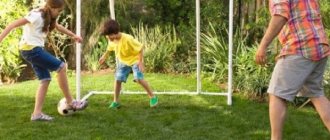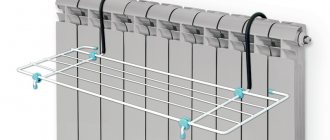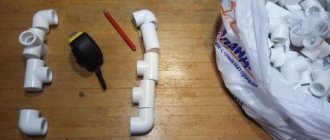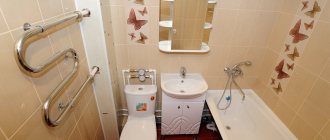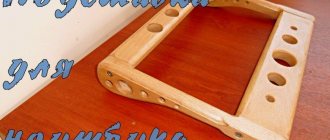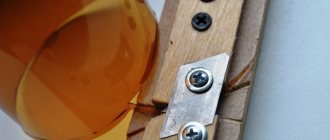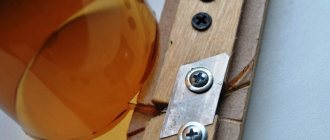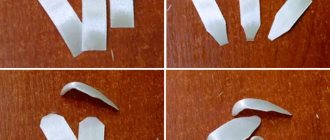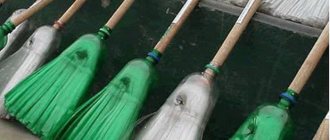PVC is a modern material with many positive qualities. It is quite inexpensive, lightweight, strong, durable, resistant to different climatic conditions and environments. In addition, plastic pipes are easily and quickly connected, ensuring absolute tightness of the joints.
Homemade catamaran made from plastic pipes
Thanks to this, the use of plastic pipes has gained wide popularity not only in the installation of water supply and sewer systems. From these, “traditional craftsmen” use their own hands to make many useful “gimmicks”, ranging from racks and drinking bowls to sleighs and watercraft.
In this article we will tell you how you can quickly and inexpensively make a catamaran from plastic (polypropylene) pipes with your own hands.
Why a catamaran?
There are a lot of options for watercraft, as well as their purposes. For those who live near bodies of water, and especially for those for whom overcoming a water obstacle is a vital necessity, a catamaran is ideal. This type of vessel has many advantages over kayaks, boats or yachts.
- To make catamarans from plastic pipes, a minimum amount of material is required. In addition, remnants from the recent installation of a sewer or water supply system may well be used;
- the catamaran is light in weight, so it does not cause problems in terms of transportation;
- due to the design features - two cylinders connected by a deck, such a craft has high seaworthiness, strength, reliability and sufficient speed;
- the ability to accommodate the required number of seats;
- Any type of engine can be installed on a catamaran.
What does a catamaran consist of?
The catamaran has a large number of design features compared to other watercraft.
The catamaran is based on large diameter plastic pipes
That is why you need to know its components in detail before starting drawings and installation work.
- The first, and most important, part of the catamaran is the floats. These are two chamber structures located on the sides of the craft. Their immediate task is to keep the ship afloat. Cylinders can be made of different materials that limit the outer perimeter of the float. To do this, use the film from which inflatable cylinders, foam plastic or PVC pipes are made.
- Connecting frame. It can be made of any materials, from the same plastic pipes to wood or metal. The lighter the catamaran frame, the smaller the floats can be.
- Deck. This part is created to accommodate passengers, luggage and other things that will be transported by water.
- Steering wheel. The function of the rudder of any watercraft is performed by an underwater blade, which for movement is directly installed parallel to the movement, and for turning it is bent in one direction or another using a rotary handle brought to the deck.
- Oars, pedals, motor or any other device that propels the catamaran.
Catamaran made of PVC pipes
And finally, we suggest considering how to make a homemade catamaran from plastic pipes (PVC) with your own hands.
For such a device, it is quite possible to take sewer pipes made of plastic with a diameter of 110-116 mm. The length of the pipes should be 3 m.
For each float, on average, you will need 5 pipes, 3 of which will go to the upper part, and the remaining 2 to the lower part. Plastic materials need to be connected to each other, which is easy to do thanks to corners or tees (in this situation, you can take what you have on hand, since there are many mounting options). The floats are fastened together by transitions made of pipes, the diameter of which should be 50 mm.
Structural elements
So, when understanding the question of how to make a catamaran, it is worth considering everything in order. The raft's pontoons are made of slats and plywood. It’s worth starting with the frames. To do this, you need to cut 12 blanks from plywood, the dimensions of which are 320 * 320 millimeters, knock them down with three or four nails, and then process everything together along the contour. Next you need to make slots for the slats. The slats are square, but the slots should be 20-25 millimeters in size. The remaining 5 millimeters in the slats are equipped with grooves. It is best to lay all six slats side by side, secure them, and then use a saw to make cuts in all of them at the same time. Since they will turn out to be a little deeper at the edges, it is worth leveling the average depth by shifting the boards several times during the work process.
Before forming grooves, it is worth checking the dimensions of the plywood sheets. If we are talking about a number less than 1500 millimeters, then it is necessary to adjust the installation location of the cross member 7 and frame 5 accordingly. Six frames require pieces of slats to be attached to them from the sides and top, and a piece of board should be attached to the bottom. Everything must be done as firmly as possible; it is better to use screws or screws for this, because nails will be driven into the slats, the task of which will be to hold the plywood.
About catamarans
A special type of polyethylene is used to make the body of modern pedal boats. Moving parts are made of stainless alloys. Thanks to the water flow, this vehicle is easy to transport and store.
In addition to catamarans, models for personal use are also available, so purchasing a pedal catamaran is not difficult if you have available funds. The choice of models offered will satisfy the wishes of customers. You can find models from single-seat children's to impressively sized water catamarans that can easily transport 4 well-fed adults. But this is not the limit, because there are structures that are designed for group walks.
Additional details
A deck or awning is found on most tents and heavyweight models; I have even seen tents on decks. Water-repellent luggage bags are also required.
It wouldn't hurt to be able to install a sail and a removable transom for the motor. In a word, there is no limit to perfection, and as long as catamarans exist, their designs will be modernized.
It is unlikely that it will be possible to create a universal vessel suitable for all types of rafting, but existing models have every chance of becoming better.
Vessel assembly
If you decide to make a catamaran with your own hands, you will need to prepare several slats. The length of four of them should be three meters each, two should be 1.9 meters each, you will also need four segments of 570-600 millimeters each, after which you can begin further work. It is clear that it is worth placing a pair of upper slats below, which will allow the frames to sit firmly in their place. You can immediately fasten a couple of cross members with screws, and then lay the keel rail, screwing it to frames 1, 5 and 6. Next, you can turn the catamaran frame on its side to secure the upper rails to the same frames.
You will need a board 50 millimeters thick to cut out the stern and bow bosses, and here it is important to take into account that their shape should be cone-shaped. And then they need to be inserted into place, having first tied the top slats with wire
On the bow and stern overhangs, the keel rail is made from several scraps.
Model with centerboard (PVC)
Inflatable PVC (polyvinyl chloride) catamarans with centerboards are quite common these days. In this case, it is more appropriate to start work by installing the beam. After this, it will be possible to fix two floats. Beams for catamarans are most often wooden. However, they can also be made from aluminum plate.
In this case, stringers must be selected with a length of at least 3 meters, but much in this situation depends on the width of the floats. The next step is to install the stand. The centerboard is attached directly to it. It is necessary to control the catamaran. You can change its position thanks to the tiller. It is installed on the stand using screws. At this stage it is very important to securely fix the support.
How to build a catamaran with a motor with your own hands
Only a good craftsman can construct such a craft on his own. But sometimes a do-it-yourself catamaran becomes better than the factory version; the owner has the opportunity to adjust the parameters and characteristics of the vessel to his needs.
First, the future model is designed: its detailed drawings are created, after which the general drawing is divided into separate drawings of all parts of the vessel. Then a frame is made (usually from duralumin). The next stage is the production of air cylinders from durable PVC of specified dimensions (length 3.5-4 m). The cylinders are equipped with valves for air injection.
In a homemade version, you can install tension balls. The assembly of the structure is completed by installing the stringers and deck. An important stage of design is checking all parts of the craft for reliability
Particular attention should be paid to the tightness of air cylinders. A high-quality homemade catamaran is always the pride of the owner
Inflatable catamarans
When moving, the inflatable catamaran comes into contact with the water only with its cylinders; the deck and frame remain above its surface. This reduces water resistance and increases speed. Now for these structures, high-pressure cylinder chambers (250-300 mbar) are used, in the manufacture of which reinforced PVC materials are used.
The use of single-layer cylinders made of durable materials reduces the weight of the craft and increases their rigidity. Inflatable catamaran models expand the capabilities of fishermen; with their help, users of a collapsible vessel get into the most inaccessible places of the reservoir, delivering the craft to the shore using personal vehicles.
Modification with longitudinal beams
With longitudinal beams, the inflatable catamaran (photo shown below) is very durable. In order to assemble the model, you need to prepare two floats. They must be at least 4.5 meters long. After this, the stringer itself is assembled. You can weld it yourself using a pipe with a diameter of 3 cm. After this, it will be possible to install a stand. For this, boards should be selected about 1.3 meters long.
The best tensioners for catamarans are the steel type. The beams at this stage must be laid very carefully. Their front part should face towards the deck. To fix them, many experts recommend using screws. After securing them, all that remains is to install the hook with the mast.
Why not buy it?
For lovers of active recreation on the water, who have a great desire to have such equipment, but do not have the opportunity to design it themselves or buy it in a store due to high prices, the option of purchasing it through various media may well be suitable. A used introductory bicycle, if, of course, it is sufficiently reliable and suitable for use, it may well please the owner for a long time and give him a lot of pleasure. After all, someone may sell a bicycle not at all because it has fallen into disrepair and the owner decided to get rid of it quickly. It is quite possible that the former owner, for a completely different reason, not related to the technical category, decided to take this step. Of course, when purchasing such a watercraft, you need to carefully, or better yet, in the presence of a person who is familiar with this type of equipment first-hand, examine all the components of the pedal boat, and then make a final decision.
Types of catamarans
Types of catamarans differ in the technical solution of the parts of the vessel:
- deck arrangements;
- installation of transverse beams for floor rigidity (beams);
- supports of different heights.
With flexible and rigid locker
The description of catamarans contains information about materials for deck construction. The locker of a catamaran can be flexible or rigid. Models with a flexible locker are easier to stack during assembly and transportation, while rigid structures are more reliable and convenient to use, but take up a lot of space during transportation.
The tension deck is made of PVC fabric, lined around the perimeter with slings with loops for fastening to the frame. The boom of these catamarans is of medium thickness, the air valve is near the stringer, and the fasteners are cross-shaped. Flexible types use polyvinyl chloride (PVC) material with a high density of 800 g/sq.m. Large cylinders can be installed on these models.
Models for two and three beams
Catamaran models for fishing have two or three beams that serve to strengthen the structure. The higher the protection of the frame, the greater the passenger capacity and other technical characteristics.
Models with two beams - for two passengers. The supports are installed at a low height. Load capacity - up to 300 kg, vessel length - up to 3.4 m, stringer diameter - 1.3 mm, cylinders - rubber patches, fastening - in the form of crosses. Can be equipped with flexible lockers. These designs are in demand among fishermen.
Catamarans with three beams are four-seater. Load capacity - up to 500 kg, air valves - near the stringer. The lockers are hard, sometimes the boom is made of rubber. Vessel options with two legs are popular. These flotation devices are made of high-density materials.
With low and high support
Supports of different heights affect the installation of motors of different power. Small models have low technical parameters, large vessels with powerful engines have higher quality characteristics.
Models with low supports are designed for installing low-power motors. Their carrying capacity is 300 kg, the air cylinders have a small diameter. It is possible to use rubber booms and ballers. The stringers are attached to PVC pads.
To use powerful motors, catamarans with high legs are produced. These models feature a rigid aluminum frame, large-diameter cylinders (density 800 g/sq.m.), and 1.4 mm thick stringers. The supports are additionally secured with braces. The length of such a catamaran reaches 4 meters.
VlCT0R 05.12.2011 — 10:58
I was interested in this question: Is it possible to make a frame for a catamaran from polypropylene pipes.
I understand that these pipes have less rigidity than duralumin ones, but in this case it is possible to create not a rigid frame, but an elastic (soft) one. At the same time, the price of the frame will decrease by an order of magnitude.
Approximate diagram of the future frame (for a catamaran-six): - lengths of pipes 25 * 4.2 - 8 pieces of two meters each; - crossbars made of pipes 40 * 6.7 - 6 pieces, two meters each (a frame is made with a larger number of crossbars to unload them from luggage); - connectors for lengths of pipes 40 * 6.7 - 4 pieces per meter (attachment to the lengths is still being thought out).
Since the pipes for the longitudinals have an outer diameter that is 1.6 mm smaller than the inner diameter of the crossbars, during transportation they can be nested one inside the other. In this case, the volume of luggage will be even slightly less than that of a classic frame (with four crossbars). The approximate weight of the frame is expected to be around 17-18 kg (also slightly less than the classic version).
The main question: are there any pitfalls in this version of frame manufacturing?
